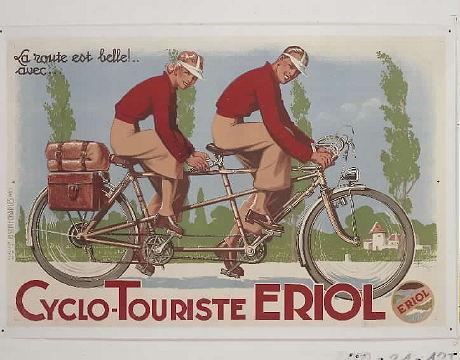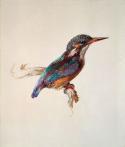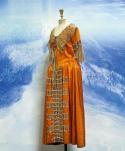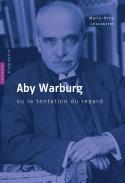Art Of The Day Weekly
#353 - from 3 July 2014 to 9 July 2014

Exhibition Le cycle à Saint-Etienne, un siècle de savoir-faire, musée d'Art et d'Industrie, Saint-Etienne.
IN THE AIR
Long live the Tour of French museums!
PARIS – The Tour de France will begin on 5 July and end on 27 July on the Champs-Elysées, after covering 3664 kilometres. As vacations are nearing, and we are all looking for new ideas for cultural tours, we could draw inspiration from the annual bicycle race. We could follow in the bicycles' steps with a tour of France's museums. Given the globalisation of our daily life, this tour could start in Leeds (Industrial Museum), go through York (British National Railway Museum) and Cambridge (not-to-be-missed Fitzwilliam, with its ancient masterpieces, its works by Holbein and Burne-Jones!). This would be followed by a fling into Belgium (musée de la Première Guerre mondiale in Ypres). It would continue in Arras (and its Young shepherdby Chassériau), Mulhouse (Cités de l’Automobile et du Train, musée de l’Impression sur étoffes, etc.), Pau (The cotton bureau in New-Orleans by Degas at the musée des Beaux-Arts) and Périgueux (the engravings on reindeer woods at the musée d’Art et d’Archéologie). A not-to-be-missed spot is Saint-Etienne and its musée d’Art et d’Industrie, which presents a very trendy exhibition: Le Cycle à Saint-Etienne, the city where the first French bicycle was built in 1886.
The exhibition at the musée d'Art et d'Industrie de Saint-Etienne
EXHIBITIONS

John Ruskin, Study of a Kingfisher, with Dominant Reference to Colour, probably 1871. Watercolour and bodycolour over graphite on wove paper; 25.8 x 21.8 cm, The Ashmolean Museum, Oxford. Presented by John Ruskin to the Ruskin Drawing School (University of Oxford), 1875.
Ruskin, from the pen to the paintbrush
EDIMBOURG - He is known for being one of the major art critics of his time, with a passion for Gothic architecture and a great defender of the pre-Raphaelites. What we knwo a lott less, is that John Ruskin (1819-1900) did not only talk of the other artists. He also left behind personal works -mostly water colours - that express his curiosity for the world around him. The little boy from the suburbs (Ruskin was born in the outskirts of London) was a lover of Nature, of animals, of waterfalls and of the rugged Scottish landscapes, his native country. His tools are with him when he travels as well, be it to Rouen, Florence or Venise, his favourite towns. Close to 130 works from all over the world, including some early Daguerreotypes, prove the span of his interests. Of course the famous portrait of him by John Everett Millais in 1854 is very-well placed in the exhibition.
• John Ruskin: Artist and Observer at the Scottish National Portrait Gallery, from 4 July to 28 September 2014.
Chagall, engraver
EVIAN – « I think Rembrandt loves me », Chagall wrote in 1922 in his Autobiography to express his love for engraving. Productions from various periods of his life, including lithographs and illustrated books, are presented. They are from the collection of Charles Sorlier, his virtuoso engraver at Fernand Mourlot's. They are completed by loans from the Fondation Cramer.
• Marc Chagall, impressions at Palais Lumière, from 28 June to 2 November 2014.
The call from the South
SAINT-TROPEZ – Lovers of the Côte d'Azur seek the light of the South. Painters impressed by the Orient seeked the same thing, like Delacroix, Matisse, Camoin or Decamps. They are all presented together in an exhibition that shows their different ways of reporting this contribution.
• La couleur sous la lumière de l’Orient at the musée de l’Annonciade, from 5 July to 13 October 2014.
AUCTIONS
Summer collections
PARIS - Summer is here and auction houses present lighter programs that are more fun. This one allows us to trace in small touches a history of the fashion of the 20th century. The price of the better lots are high: such as the cocktail dresses Sonatine and Black Swann, the Dior collections of 1957 and 1959, and the crepe dress by Madeleine Vionnet, from the 1920s, could each sell for more than €10,000. As for the rest, one should be able to come away with significant trophies, at prices that are a lot more accessible, such as the dress in orange satin by Jeanne Lanvin with a Charlotte Corday neck (1922) for €2500, or lovely pieces by Mila Schön or Robert Piguet. Creators who have been forgotten and yet were famous in their time, such as the Paquin sisters or Jean Dessès, a perfect contemporary of Dior's, are honored in this special occasion…
• Haute couture et vintage at hôtel Drouot, 8 July 2014 (Cornette de Saint Cyr)
ARTIST OF THE WEEK
Szczesny XXL
When showing gigantic formats in the Palais des papes in Avignon, how can one not think of Picasso, who was honored ,while still living, with a large retrospective in 1970? Even if the two events are not linked, Stefan Szczesny (born in 1951) does not at all deny the influence of the master of Mougins, his great rival Matisse, or even Manet. From the point of view of creation seen as an eternal beginning, Szczesny, the herald of Figurative painters of the group of New Fauvists (Neue Wilde), drew his inspiration in the heritage of the past centuries to retranscribe them on canvases, sculptures, ceramics, cut out metal plaques, without hesitating to create links with the world of luxury (big hotels, real estate operations, Jaguars) through his "Factory" capable of responding to unclassifiable projects. In the steps of Warhol, Mark Kostabi or Damien Hirst, art seen as a semi-industry.
• Stefan Szczesny, Métamorphoses méditerranéennes at Palais des Papes d’Avignon, from 7 June to 26 October 2014.
.
OPENINGS OF THE WEEK

BOOKS
A different Warburg
It is not rare that heirs of important families of bankers develop a passion for the arts or music. It is a lot more rare for the other members of the family to give him or her their unwavering decade-long support. That is precisely what ismost astonishing in the biography of Aby Warburg (1866-1929), the founder of a current in art history based on a ruthless documented study and on systematic cross-referencing of sources. Warburg went from Germany to Florence -where he worked on a thesis on Botticelli - and Arizona, interrupting his travels by a number of psychiatric internments. He pursued his project of building a major history of art library. The KBW was inaugurated in 1926 in Hamburg, where his family made their fortune in la shipping and banking. It was removed just in time to London during the rise of the Nazis, and is still today a fundamental reference. This biography, based on a remarkable series of documents, tries to analyze the man's rich and complex personality, placing him back in the network of his contemporaries (Cassirer, Berenson, Saxl).
• Aby Warburg, ou la tentation du regard, by Marie-Anne Lescourret, Hazan, 2014, 432 p., €29.


